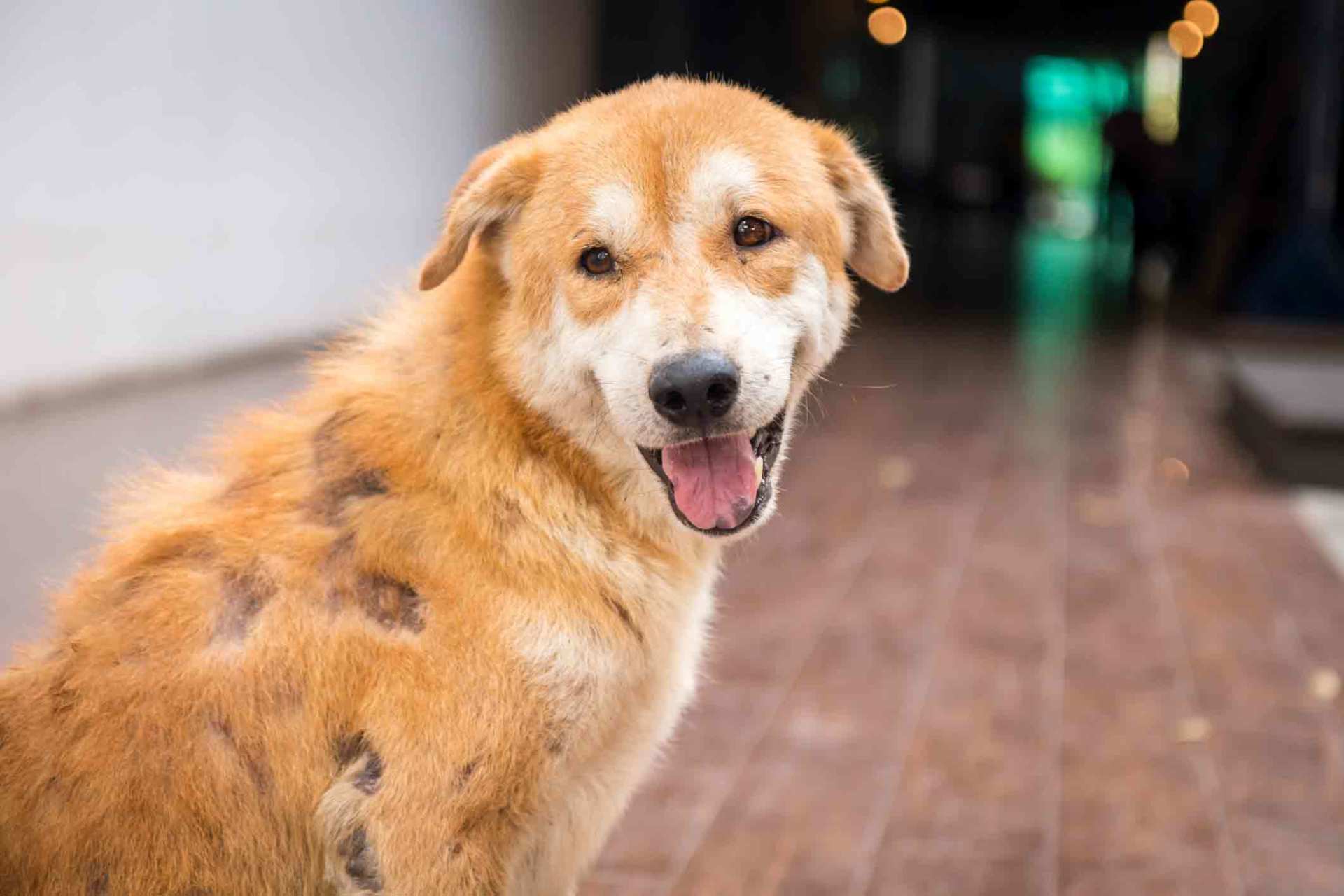Dog Skin Cancer: Causes, Symptoms, and Treatment
Dog skin cancer is a growing concern among pet owners. As our canine companions spend more time outdoors and are exposed to environmental factors, the risk of skin cancer increases. This article aims to provide a comprehensive understanding of dog skin cancer, its symptoms, diagnosis, and treatment options. By raising awareness and sharing essential information, we hope to empower dog owners to take proactive measures for their furry friends’ well-being.
What is Dog Skin Cancer?
Dog skin cancer refers to the abnormal growth of cells in a dog’s skin. Just like humans, dogs can develop various types of skin cancers, including melanoma, squamous cell carcinoma, and mast cell tumors. Each type has unique characteristics and treatment considerations. Understanding the differences is crucial for early detection and appropriate management.
Melanoma is one of the most aggressive forms of dog skin cancer, often appearing as dark, irregularly shaped growths. Squamous cell carcinoma typically presents as raised, scaly areas that may ulcerate. Mast cell tumors can vary in appearance and texture, making them harder to identify without a professional evaluation.

Common Symptoms of Dog Skin Cancer
Recognizing the symptoms of dog skin cancer is vital for timely intervention. Keep an eye out for the following signs:
Unusual Lumps and Bumps:
Palpable masses that grow rapidly or don’t heal.
Lesions and Ulcers:
Open sores that don’t improve or worsen over time.
Changes in Skin Color:
Noticeable shifts in pigmentation, especially in moles or existing growths.
Persistent Itching:
Frequent scratching or discomfort in a specific area.
Bleeding or Discharge:
Unexplained bleeding or fluid oozing from a skin lesion.
Changes in Behavior:
Your dog might become more irritable or lethargic due to pain or discomfort.
Diagnosis and Medical Evaluation
If you suspect your dog has skin cancer, a thorough diagnosis is essential. Your veterinarian will perform a physical examination, assess your dog’s medical history, and conduct tests to determine the type and extent of the cancer.
A biopsy is a common procedure in which a small sample of the affected tissue is taken and examined under a microscope. This helps identify the specific type of skin cancer and its characteristics. In some cases, additional tests such as fine needle aspiration or imaging studies might be recommended to assess the spread of the cancer to nearby lymph nodes or organs.
Treatment Options
When it comes to treating dog skin cancer, a tailored approach is crucial. The treatment plan will depend on factors such as the type of cancer, its stage, and your dog’s overall health. Here are some common treatment options:
Surgery:
Surgically removing the cancerous growth is often the primary treatment. It’s effective for localized tumors and may be curative if caught early.
Chemotherapy:
This treatment uses drugs to target and destroy cancer cells. It’s particularly useful when cancer has spread or when surgery isn’t feasible.
Radiation Therapy:
High-energy rays are focused on the cancerous area to shrink tumors and prevent further growth. It’s often used in combination with surgery or chemotherapy.
Immunotherapy:
This approach boosts the immune system’s ability to recognize and attack cancer cells. It shows promise in treating certain types of skin cancer.
Targeted Therapy:
Targeted drugs are designed to attack specific molecules that drive cancer growth. They can be effective with fewer side effects than traditional chemotherapy.
Prevention Strategies
Preventing dog skin cancer involves a combination of protective measures and vigilance. Here’s how you can minimize the risk:
Limit Sun Exposure:
Just like humans, dogs can get sunburned and develop skin cancer. Provide shaded areas and consider dog-safe sunscreen for vulnerable areas.
Regular Grooming:
Regular grooming allows you to detect any abnormalities early. Brush your dog’s coat to remove debris and inspect the skin.
Healthy Diet:
A balanced diet rich in antioxidants and essential nutrients supports overall health, including skin health.
Veterinary Check-ups:
Regular vet visits ensure any potential issues are caught early. Your vet can perform thorough skin checks as part of routine exams.
Navigating Life with a Canine Cancer Patient
Being a caregiver to a dog with skin cancer requires patience and care. Here are some tips to help you navigate this journey:
Comfort is Key:
Make sure your dog has a comfortable place to rest and recuperate, especially after treatments.
Maintain Routine:
Dogs thrive on routine. Stick to their regular feeding, walking, and play schedules to provide stability.
Address Pain:
If your dog is in pain, consult your vet for appropriate pain management strategies.
Emotional Support:
Dogs can sense their owner’s emotions. Stay positive and provide ample affection to help them cope.
Holistic Approaches and Complementary Therapies
In addition to conventional treatments, some dog owners explore holistic and complementary therapies to support their pets’ well-being during cancer treatment. Here are a few options to consider:
Acupuncture:
This ancient practice involves inserting thin needles into specific points on the body to stimulate healing and alleviate discomfort.
Herbal Supplements:
Some herbs are believed to have anti-inflammatory and immune-boosting properties. Always consult your veterinarian before introducing supplements.
Dietary Changes:
Certain diets might be recommended to support your dog’s immune system and overall health. Consult your vet for guidance on appropriate dietary adjustments.
Success Stories and Testimonials
Reading about real-life success stories can provide hope and inspiration to dog owners facing the challenges of skin cancer. These stories showcase the importance of early detection, timely treatment, and unwavering dedication. While each case is unique, the stories highlight the positive outcomes that are achievable with the right care and support.
Resources and Support for Dog Owners
Dealing with dog skin cancer can be overwhelming, but you’re not alone. Here are some resources that can offer guidance, support, and further information:
American College of Veterinary Dermatology:
Provides information on skin-related issues and helps locate a veterinary dermatologist near you.
Pet Cancer Support Groups:
Online communities where you can connect with other pet owners facing similar challenges.
Your Local Veterinarian:
A valuable source of information and support, your vet can guide you through your dog’s treatment journey.
Frequently Asked Questions (FAQs) About Dog Skin Cancer
What is dog skin cancer?
Dog skin cancer refers to the abnormal growth of cells in a dog’s skin. It can manifest as various types, including melanoma, squamous cell carcinoma, and mast cell tumors.
What are the common symptoms of dog skin cancer?
Common symptoms include unusual lumps, lesions, changes in skin color, persistent itching, bleeding, and changes in behavior.
How is dog skin cancer diagnosed?
Diagnosis involves a physical examination, medical history review, and often a biopsy of the affected tissue. Imaging studies and fine needle aspiration might also be used.
What are the treatment options for dog skin cancer?
Treatment options include surgery, chemotherapy, radiation therapy, immunotherapy, and targeted therapy. The choice depends on the type and stage of cancer.
Can dog skin cancer be prevented?
While prevention isn’t guaranteed, limiting sun exposure, regular grooming, maintaining a healthy diet, and routine veterinary check-ups can reduce the risk.
How can I support my dog emotionally during treatment?
Maintaining routines, offering comfort, and providing love and attention can help alleviate stress and anxiety for both you and your dog.
Are holistic therapies effective for dog skin cancer?
Holistic approaches like acupuncture and herbal supplements can offer supportive benefits, but they should complement conventional treatments under veterinary guidance.
What resources are available for dog owners dealing with skin cancer?
Look into the American College of Veterinary Dermatology, online pet cancer support groups, and consult your local veterinarian for guidance and support.
Is early detection important for successful treatment?
Yes, early detection significantly improves treatment outcomes. Regular skin checks and prompt veterinary visits play a crucial role.
What role does a veterinary oncologist play in treating dog skin cancer?
A veterinary oncologist specializes in diagnosing and treating cancer in animals. Consulting one can provide expert insights and tailored treatment plans.
Can skin cancer be prevented in dogs?
While you can’t eliminate the risk entirely, preventive measures like sun protection, regular grooming, and balanced nutrition can certainly reduce the risk.
How can owners support their dogs emotionally during treatment?
Maintaining routines, offering comfort, and providing ample love and attention can help alleviate stress and anxiety for both the owner and the dog.
Conclusion:
Understanding and addressing dog skin cancer is essential for every pet owner. By recognizing symptoms, seeking professional advice, and exploring treatment options, you can offer your furry friend the best chance of a healthy life. From preventive measures to emotional support, every step you take contributes to your dog’s comfort and well-being. With early detection and proper care, your loyal companion can overcome the challenges of skin cancer and continue to bring joy to your life.




